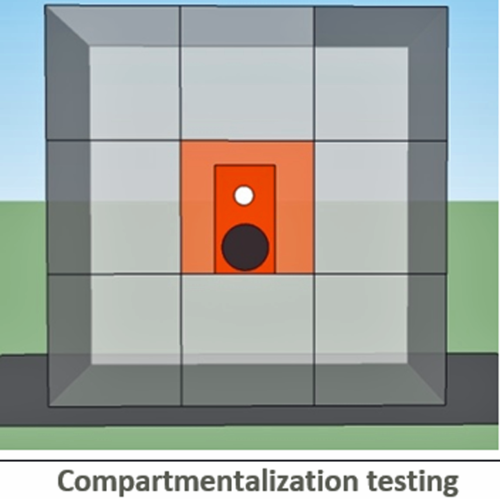
Testing air leakage in ductwork used for forced-air heating and cooling systems has been required since the 2012 International Residential Code (IRC). From 2012 through 2018, the IRC allowed a testing exemption for all ductwork located inside the building envelope. In other words, if you kept all ductwork inside the thermal and air boundary of the building, no testing was required. That has changed for the 2021 edition of the International Energy Conservation Code (IECC).
Two testing standards
There are two standards allowed for duct tightness testing, ANSI/RESNET/ICC 380 (which also includes the blower-door testing standards) and the ASTM E1554. Both standards require testing to be performed at a pressure of 25 Pascals (Pa) or 0.1 in. of water column. Testing can be performed during rough-in, either with or without the air handler encloser installed. Testing can also be performed post construction, testing at this point requires the air handler to be installed. The 2021 IECC limits both the rough-in and post-construction tests to an air leakage rate of 4.0 cubic feet per minute (CFM) per 100 sq. ft. of conditioned floor area when the air handler is present. If the air handler is not present during the rough-in test, air leakage is limited to 3.0 CFM per 100 sq. ft. of conditioned floor area. Both the rough-in and post-construction testing requirements are when any part of the duct system is located outside the building thermal/air boundary.
New testing requirements
Here is the major change to the duct tightness testing requirements in the 2021 IRC: If all the ducts remain inside the thermal/air boundary, ductwork will be tested with leakage rates limited to 8.0 CFM per 100 sq. ft. of conditioned floor area, which is fairly easy to pass, but testing is required to verify the limit. My guess is the 8.0 CFM limit will be tightened in future code additions.
Section…
Weekly Newsletter
Get building science and energy efficiency advice, plus special offers, in your inbox.

This article is only available to GBA Prime Members
Sign up for a free trial and get instant access to this article as well as GBA’s complete library of premium articles and construction details.
Start Free TrialAlready a member? Log in















0 Comments
Log in or become a member to post a comment.
Sign up Log in